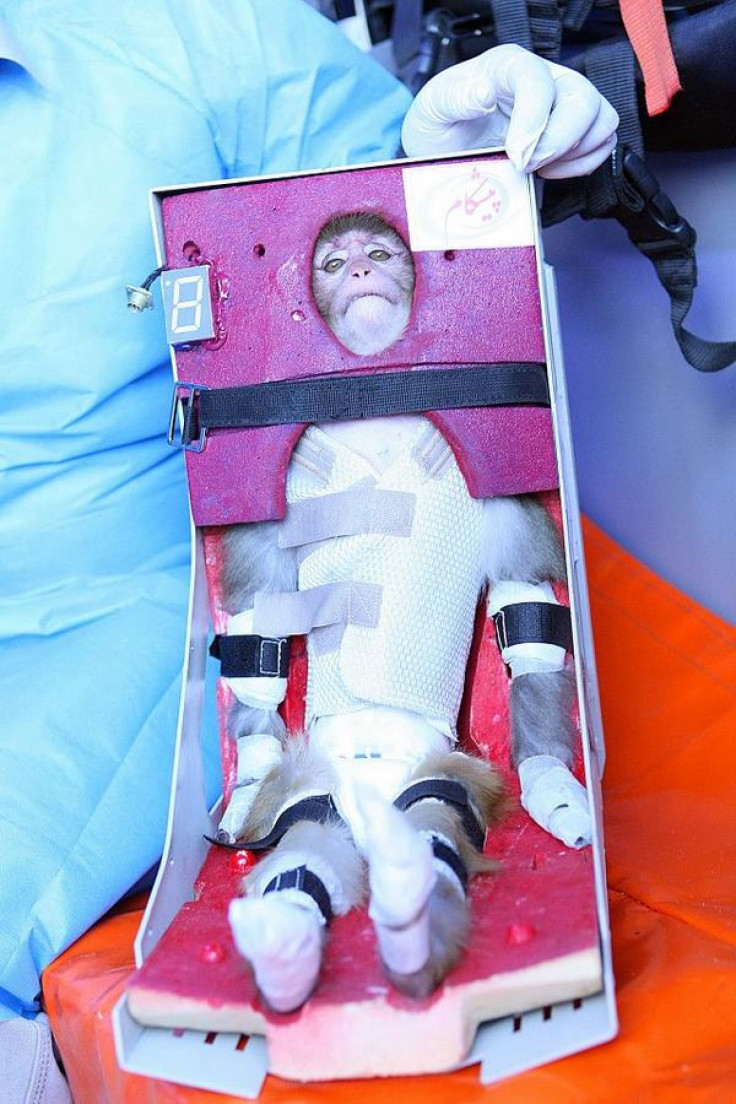Iran Claims First Monkey Mission To Space A Success

Iran’s state news agency claimed Monday that the country has shot a monkey into space and successfully retrieved it alive, gearing up for future missions with human passengers.
The primate was sent up 75 miles, reaching suborbital flight, in a capsule code-named Pishgam, which means “pioneer,” according to the state-run PressTV. The Pishgam capsule is the same design as the one the Iranians plan to use to transport people into space.
The success of the mission has not yet been verified independently.
Images of the monkey, strapped to a harness, were broadcast on state TV. The director of Iran’s space agency, Hamid Fazeli, told PressTV that “because of biological similarities between humans and monkeys, the latter were selected for the space mission.”
Fazeli said that Iran would be sending humans into space within five to eight years. ISA also expects to launch its Sharifsat satellite, manufactured in Iran, by late March.
Iran claims that it first sent animals into space in 2010, becoming the sixth nation to do so. The Kavoshgar-3 rocket carried worms, two turtles and a rodent into suborbital space. A previous attempt to send a monkey into space failed in September 2011.
Many countries, not least of all the U.S., are nervous at the prospect of a spacefaring Iran and the thought that its space agency may be working on developing ballistic missiles that could deliver nuclear payloads.
Monkeys have always been on the frontlines of space exploration, helping scientists understand the stresses of space flight. But historically, their flights have often ended in tragedy.
America’s first primate astronaut, a rhesus monkey named Albert, died mid-flight in 1948. His successors, Albert II through Albert IV, also met bad ends, falling prey to explosions and parachute failure. Not until 1959 did NASA successfully recover live monkeys after space travel -- Miss Baker, a squirrel monkey, and Able, a rhesus monkey.
One of NASA's more famous nonhuman primate astronauts is Ham, the first chimpanzee launched into space by the U.S. Ham's 16-minute suborbital flight differed from previous missions in that he actually performed tasks like lever-pulling inside the capsule, instead of just going along for the ride. Ham returned to Earth intact, suffering only a bruised nose throughout the entire mission.
The Soviet Union space program (and, eventually, the Russian space program) has been sending up monkeys since 1983. The last Russian nonhuman primate astronauts, a pair of macaques named Lapik and Multik, blasted off in 1996. Multik died a day after returning to Earth, while being given anesthesia for a biopsy during his post-landing medical checkup.
Multik’s death is intriguing to scientists researching medical procedures and space, particularly given the bad reaction that U.S. monkey astronaut Able had to anesthesia. NASA researchers are still trying to figure out ways to combat the muscle wasting and other bodily changes wrought by zero-gravity and space travel -- an understanding that will be essential for long space missions with humans in the future.
© Copyright IBTimes 2024. All rights reserved.











